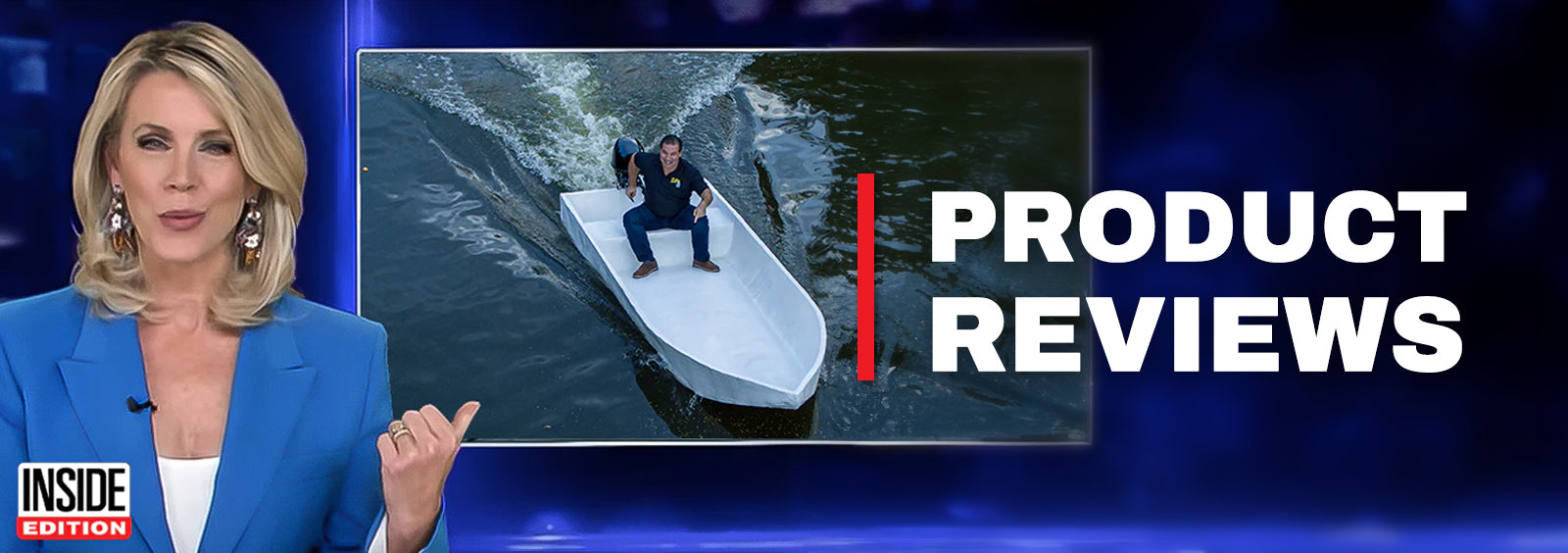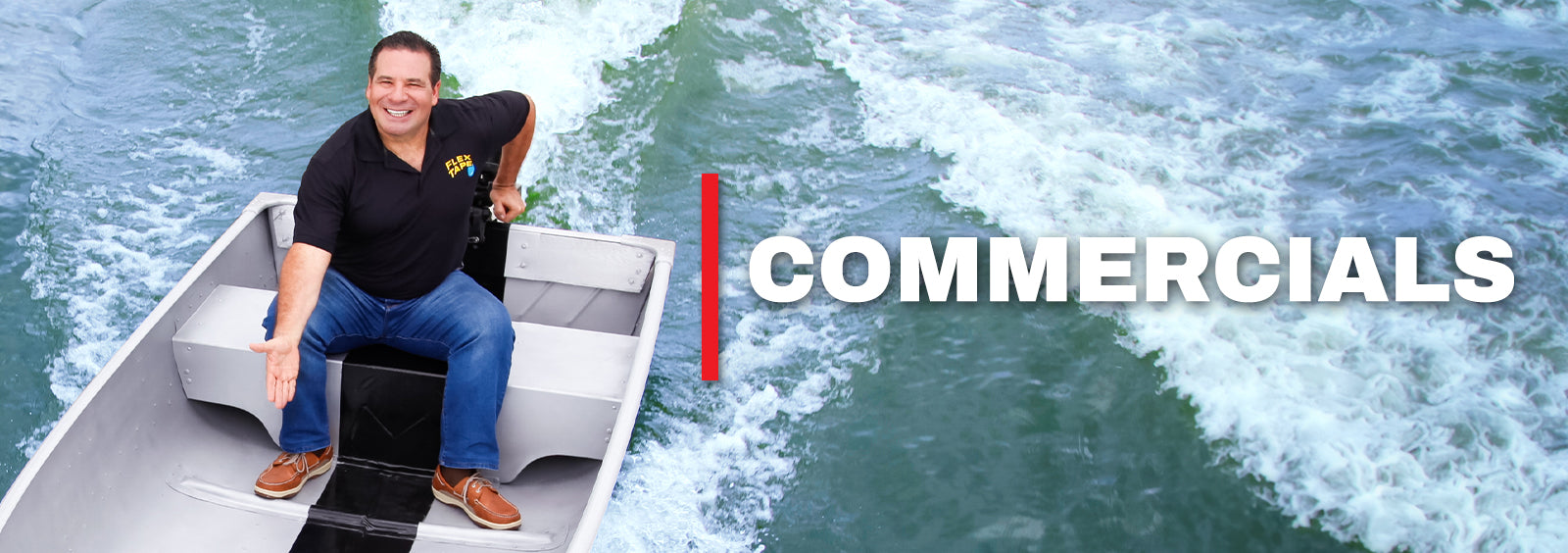12 Facts About Floods
This “Facts About Floods” blog was written by Flex Seal. All facts were provided by Dr. Reed Timmer.

Flooding is a worldwide problem, causing extensive damage to anything in its path. And the probability of you being affected by a flood is rising.
“Nearly all natural disasters can lead to flooding,” stresses Dr. Reed Timmer, Extreme Meteorologist and Storm Chaser. “It’s critical for everyone to understand the dangers that are associated with it.”
Timmer sat down with us to share 12 interesting facts about floods that should not be overlooked. Read on to learn more about flooding.

1. Floods Are Now the #1 Natural Disaster on the Planet

Floods are not only the most widespread and common natural disaster on the planet today, they are also the deadliest. In the United States, floods are responsible for more deaths than tornadoes, hurricanes and lightning combined.
These disasters are happening more frequently than ever, due in part to climate change, higher tides, and increased urban development.
2. Earth Has Lost More Than 28 Trillion Tons of Ice Over the Last 30 Years

Rising temperatures have contributed to significant ice melts all over the planet, which is a huge cause for concern when it comes to flooding worldwide. The earth lost 1.2 trillion tons of ice in 2020 alone, and those numbers are only projected to increase in the coming years.
With the ever-changing climate, flooding is becoming more frequent and even occurring in places that haven’t experienced flooding in decades.
3. 90% of Natural Disasters in the United States Involve Flooding

Nearly all natural disasters can have flooding associated with them, including:
• Hurricanes
• Tsunamis
• Wildfires
• Rapid snow melts
• Earthquakes
• Volcanos
• Damalanches (rapid melting of snow caps causing snow and debris to quickly fall)
4. Flooding Is 900% More Frequent in Coastal Areas Than 50 Years Ago

Climate change, powerful storm surges , the ability for the atmosphere to hold more moisture, and global ice melts are just some of the reasons that many coastal areas may be seeing such an increase in sea-level rise and flooding. Even simple tidal floods, which are floods that arise from higher than usual tides, are now causing floods in areas that have not experienced them in several decades.
5. Floods Occur Year-Round

Although flooding can be more common during the summer months due to warmer temperatures, floods can, and do happen throughout the entire year.
Winter storms, such as nor’easters, can cause flooding, as can ice jams and rapid snowmelts during the winter and spring seasons.

Beyond weather events, urban development, structural failures of dams and levees, and defective sewer systems can also trigger flooding at any time.
6. 99% of All United States Counties Have Experienced Flooding

Just about anywhere in the United States can be prone to some type of flooding.
Many people believe that flooding only affects coastal or low-lying areas, such as beach communities, valleys, or locations that are at, near, or below sea-level. But in reality, flooding can occur almost anywhere. Even living in the desert or far from a body of water does not mean you are immune to experiencing a flood.
7. Flood Waters Can Sweep Away Objects That Weigh Thousands of Pounds

The power of water should not be underestimated. Just a few inches of moving water can knock someone down, and a few feet of it can carry away heavy objects, such as cars or mobile homes. Water is 1,000 times the density of air, making even a small amount of water capable of causing a large amount of destruction.
8. Flooding Costs Billions of Dollars in Damage Each Year

Flooding is the costliest natural disaster in the world, causing billions of dollars in damage each year, in the United States alone.
According to Timmer, Flooding cost US taxpayers almost $900 billion since 2000. Traditional homeowners insurance does not cover loss from flooding and homeowners must purchase flood insurance separately to help protect their homes. Surprisingly, Timmer adds that around only 5 million Americans currently have flood insurance, leaving millions more at risk of experiencing the financial effects of flood damage.
9. Just 1 Inch of Flood Water Can Destroy a Home or Business

Flood water can seep into your home or business through cracks, door and window frames, or other susceptible areas. Once inside, this water can wreak havoc on your property, potentially destroying flooring, drywall, furniture and more. The excess moisture can also lead to the formation of dangerous bacteria and black mold, which can cause a host of health problems.
Basements are especially susceptible to flood damage since they are below ground level. Even small amounts of water damage from flooding can cost thousands of dollars in repair and in some cases, can even require a property to be completely gutted and rebuilt.
10. 25% of Flood Insurance Claims Are from Low-to-Moderate Risk Areas

There is a misconception that flooding only happens in high-risk flood zones, but that is simply not true. Low and moderate risk areas are still affected by flooding and account for about 25% of all flood insurance claims, according to Timmer. Since many flood victims are without flood insurance, there are many more Americans in those low to moderate risk areas whose flood damage is going unreported.
11. Flood Waters Can Pose Hidden Dangers

Flood waters can be riddled with a host of dangers. Even if the water appears to be safe, it is best to avoid wading or driving through it, as there could be many hidden dangers.
Some potential dangers of flood waters include:
• Toxic waste, feces, and flesh-eating bacteria
• Wildlife, such as alligators, snakes, scorpions, spiders, and fire ant mounds
• Downed powerlines, which can electrically charge the water
• Sharp debris
• Sinkholes
12. Flex Seal Flood Protection Can Help Stop Water

Although you can’t prevent floods from happening, The Flex Seal Family of Products is revolutionizing the way you can prepare for one. Flex Seal Flood Protection is a new innovation in flood protection specifically designed to help prevent damaging flood waters from entering your home or business.
Every structure is different, making it impossible to stop all flood waters every single time, but Flex Seal Flood Protection products can help slow down or even stop water from entering your property. These incredible products work together to help create multiple layers of waterproof protection and are removable**, making them a great choice for protecting your home or business against flood water up to 3ft*.
IMPORTANT INFORMATION: Always follow state and local warnings regarding evacuations. Never seal people or animals inside of a structure. Every structure is different, so it's impossible to stop all flood waters 100% of the time. Depending on the age and type of construction, there may be areas that cannot be seen or sealed. Unsealed porous surfaces, such as concrete, can seep water during extended underwater exposure. Patent pending for products and uses. Not intended for flash floods.
*The Flex Flood Protection line has been evaluated by UL Solutions and meets applicable verification requirements for stopping water intrusion for the specified gap widths, water depths, specified gap widths and water depths as described here. These tests were performed in a UL Solutions laboratory using manufacturer’s recommended application instructions.
** May leave residue or remove paint. Refer to FlexSealProducts.com/flood for removal instructions.

By Paula Falcon
Paula is an Editor at The Flex Seal Family of Products, where she focuses on writing and editing articles for the company’s blog.



















